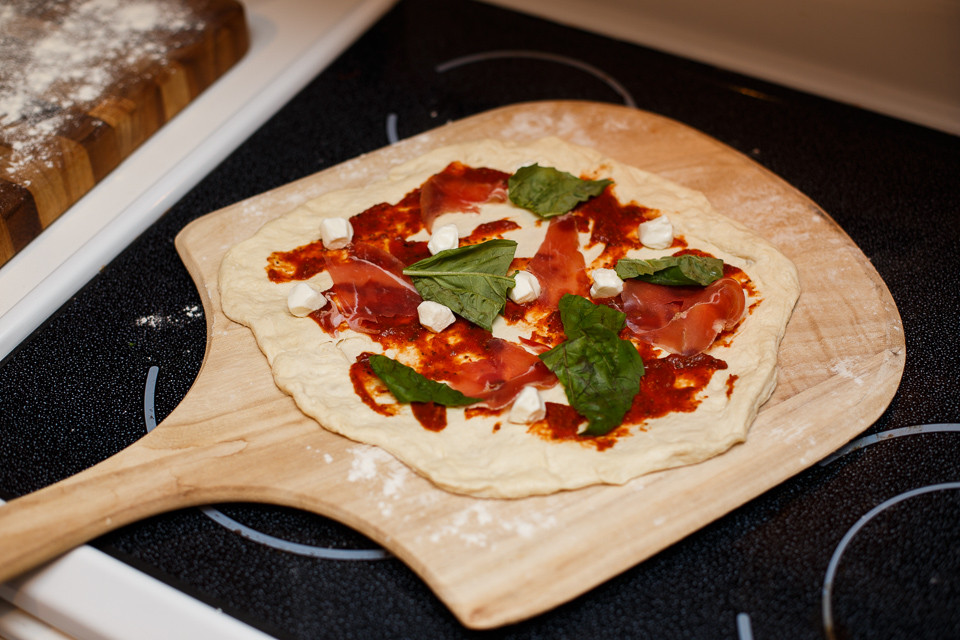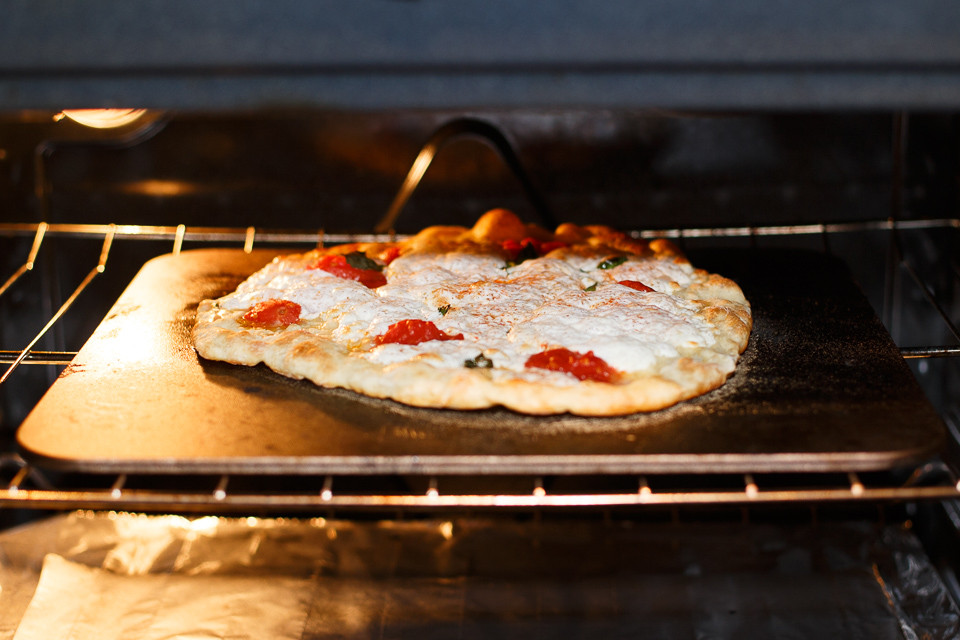I've been experimenting with Neapolitan pizza dough(recipe) and what I would call a normal wooden peel(here). I have run into trouble transferring the pizza from the peel to my baking steel in the oven on about 10% of my pizzas. Usually what happens is I'm fine transferring the first 1-2 pizzas, but by the 3rd or 4th in a row(within 20mins or so) the pizza sticks to the peel and causes a huge mess in the oven and me to throw out the dough.
The way I am making dough is about as wet as I can make it, I add about 20-30g to the existing recipe noted above to make it extra wet. I flour the peel, dough, my hands, and working surface quite liberally with a dredge. I stretch the dough about as far as possible for 200g pizza, until it almost tears.
I did find a tip on YouTube where they recommended lifting up the edge of the dough after it is prepared on the peel, and blowing under the pizza dough to "lift" it up before trying to launch it off of the peel. I do this each time and still run into my issue.
Note - I do own an aluminum peel as well, but the first and only time I tried that to transfer the dough into the oven I failed so I'm too afraid to try it again without further advice on the matter(this peel)
Here is what my dough usually looks like with the peel I normally use floured and ready to be launched into the oven:

Here was a successful peel to steel transfer to give you an idea of my oven and setup:

